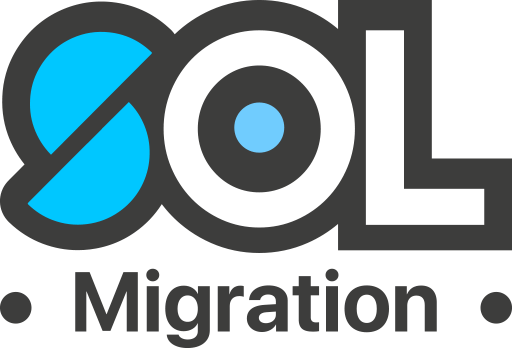Introduction
As Australia adjusts its migration strategy in 2025, regional migration is getting popular. Better visa prospects, high quality of life, growing economies and more jobs in high-demands are some of great benefits of working and living in regional Australia.
Why is Regional Migration booming in 2025?
Easier Pathways to Permanent Residency (PR)
To encourage skilled international migrants to move to regional areas, the Australian Government actively provides benefits for those applying for Regional Migration visas:
- Extra points for General Skilled Migration (GSM) applicants (subclass 491): If you are sponsored by a Regional State/Territory, you will have extra 10 points when applying for a Skilled Work Regional visa subclass 491. This option is perfect for those who haven’t earned enough the minimum requirement score (65 point as of June 2025).
- The occupation lists for regional areas are expanded with more roles in demand.
- The processing time for many regional visas is faster than other skilled visas (subclasses 190 and 189)
- Short PR eligibility timelines: After 3 years living and working in an approved regional area and meeting the income threshold, the 491 visa holders can apply for a PR via the subclass 191.
For many applicants, choosing a regional location means faster and clearer pathways to PR.
Less Competition, More Opportunity
Big cities like Sydney, Melbourne and Brisbane are a highly popular destination of migrants, which means it is very competitive to get a visa invitation. In contrast, regional areas often have:
- Fewer applicants, which can increase the chances of sponsorship from an Australian state/territory
- High demand for skills in industries like healthcare, education, construction, and agriculture. Some occupations are not listed in the skilled list used for 189 visa, but are listed for 491 visa.
- Have invested lots of resources to boost economies and infrastructure to support population growth. This means there will be more job opportunities for you.
Lower Cost of Living and Better Lifestyle
Compared to big cities, regional cities and towns normally have lower living costs:
- More affordable housing and renting: The average housing prices in big cities are $1,025,742 while the average housing prices for regional areas are $678,818 only (as of June 2025). Similarly, the renting prices in regional areas is about 37% less than that in capital cities.
- Moreover, the regional areas will experience less congestion, have cleaner air and a strong sense of community, compared to metro cities.
- You will have more access to nature, outdoor activities, and a more relaxed pace of life.
The above benefits can significantly improve our well-being and financial stability.
Education and Work-Study Benefits for International Students
International students who study and live in designated regional areas can enjoy:
- Post-study work rights extension (under visa 485): If you study and live in a designed regional area for at least 2 years, you can extend your stay in Australia post-graduation by 1–2 years compared to metro areas.
- Lower tuition and living costs: Universities and colleges located in a regional area normally have more affordable tuition fees. It is not to mention that they often offer attractive scholarships for international students.
- Bonus points for regional study when applying for PR: You can get 5 points when applying for PR if you study and live in a regional area for at least 2 years.
Some popular regional universities in Australia include:
- University of Wollongong
- University of New Castle
- Australia Catholic University
- Southern Cross University
- James Cook University
- Central Queensland University
- The University of Sunshine Coast
- The University of Southern Queensland
- Charles Darwin University
- Bond University
- Adelaide University
- Flinders University
- University of Tasmania
- Deakin University
- Federation University (depending on Campuses)
- Australian National University
- University of Canberra
- Curtin University
- Edith Cowen University
How to Get Started With the Regional Migration?
Below is a step-by-step overview for those who consider migrating to Australia with the regional pathway:
Step 1: Choose a Regional Area
Designated regional areas in Australia are classified into Category 2 (Cities and major regional centres) and Category 3 (Regional centres and other regional areas). For examples:
Category 2: Gold Coast, Sunshine Coast, Newcastle, Geelong, Adelaide
Category 3: Toowoomba, Launceston, Wagga Wagga, Darwin
If you study and live in a regional area in the Category 2, you can have additional 1 year in your visa 485 after graduation. If you study and live in a regional area in the Category 3, then you can have additional 2 years staying in Australia (under visa 485)
Step 2: Explore Regional Visa Options
Popular regional visa subclasses include:
491 – Skilled Work Regional (Provisional) visa (please link to the article for 491 visa)
494 – Employer Sponsored Regional visa (please link to the article for 494 visa)
Each has unique criteria around skills, job offers, study locations, and sponsor obligations.
Step 3: Study or Work in Regional Australia
If you’re an international student, you can:
- Enrol in a CRICOS-approved course in a regional institution.
- Ensure your address and campus location match a designated regional area.
If you’re a worker and wish to migrate to Australia via a regional visa pathway, you can:
- Secure a job offer in a regional area
- Get state or territory nomination for skilled migration points.
Step 4: Plan for Permanent Residency
After your visa (subclass 491 or 494) is granted, you need to stay and work in the regional area for 3 years (minimum)
You also need to meet income and residency requirements.
After that, you can apply for PR via subclass 191 once eligible.
Conclusion
There may be more opportunities for you to migrate to Australia if applying for a Regional Visa. It’s advisable that you should outline a clear plan and well prepare in advance. If you need professional advice from registered migration agents, contact SOL Migration at 07 3003 1899 or hello@solmigration.com. Our experienced migration agents will help you point out the best strategies based on your personal situation.


